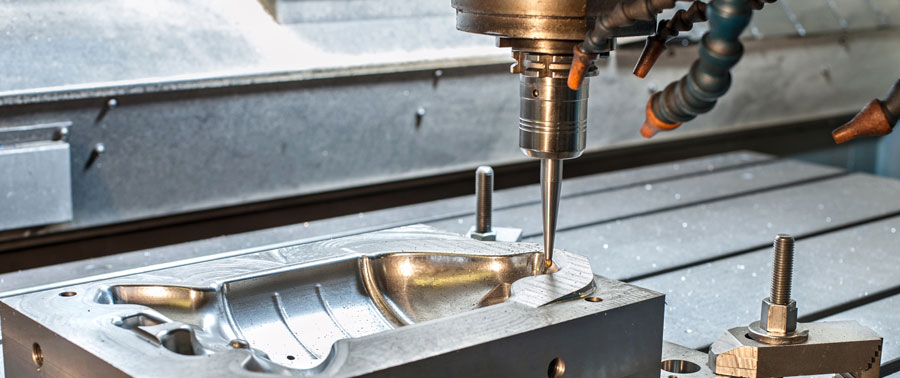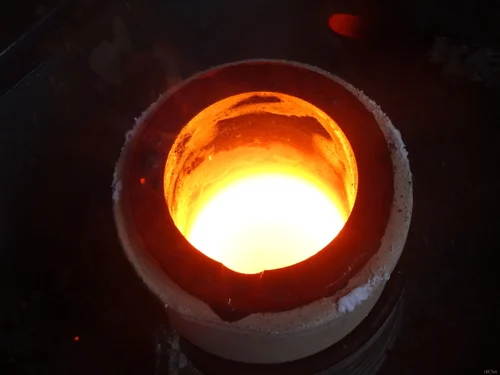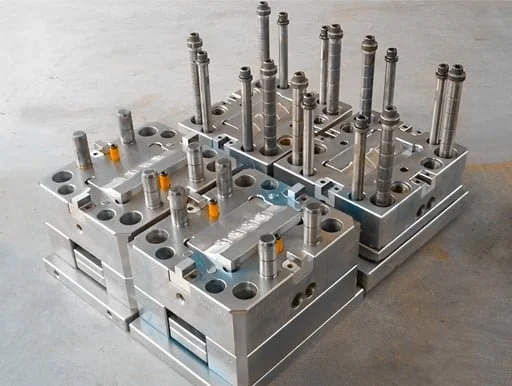Ever wondered how intricate aluminum products are made with such precision? The process behind it, known as aluminum die casting, is a captivating blend of art and engineering. This article takes you through each step of this process, revealing the magic that turns aluminum into versatile components. Let’s unravel the fascinating world of aluminum die casting from raw material to finished product.
What is Aluminum Die Casting?
Aluminum die casting is a crucial manufacturing process that converts aluminum into precise components. This process involves injecting molten aluminum into a designed mold cavity. After cooling and solidifying, the die opens to reveal the formed part. Its versatility and ability to craft lightweight yet robust components are a cornerstone of modern manufacturing.
Why Aluminum Die Casting?
This method excels over traditional casting, creating intricate shapes and designs. Aluminum flows precisely into every mold detail, yielding accurate components with a smooth finish. Efficient cooling ensures rapid solidification, enabling cost-effective production of complex parts.
Selecting the Optimal Alloys: Raw Materials
Aluminum alloy selection is vital in die casting, directly impacting final product quality and performance. Alloys are chosen based on unique properties, meeting application requirements.
The selection process’s importance stems from the varying strength, weight, corrosion resistance, and other fundamental traits of aluminum alloys. These traits directly impact a component’s performance in its intended role.
Aluminum alloys span a range from soft to exceptionally strong. Stronger alloys are preferred for applications requiring robust structural integrity, including aerospace or automotive parts. Lighter alloys are favored in cases prioritizing weight, such as consumer electronics.
Opting for the proper alloy ensures parts endure corrosion, preserving functionality and extending the final product’s lifespan.
Moreover, alloy choice affects the casting process. Some alloys boast superior flow properties, capturing intricate details more accurately during casting. It significantly enhances the overall quality and precision of the end piece.
Mold Magic: Preparation and Designing
Molds form the core of the process, governing the end product’s accuracy, excellence, and efficiency. Crafting molds involves meticulous attention to crucial elements. Foremost is part geometry – molds must faithfully reproduce intricate outlines and details of the desired piece, demanding precision to ensure accurate replication.
Cooling channels assume a pivotal role. As molten aluminum fills the mold, these channels disperse heat, facilitating uniform cooling and solidification. Adequate cooling is vital to avert flaws and ensure steady part quality.
Furthermore, factors like mold material selection, surface finish, and alignment mechanisms contribute to the overall triumph of the die-casting process.
Heating the Forge: Melting the Aluminum
The melting stage gradually liquefies solid aluminum through intense heat using induction or gas-fired furnaces. Maintaining precise temperature control is imperative to achieve the desired molten state while upholding integrity.
Induction furnaces employ electromagnetic fields for efficient and consistent melting, whereas gas-fired furnaces utilize controlled flames to achieve the necessary temperature.
The correct temperature ensures proper fluidity and optimal casting. Once aluminum turns molten, vigilant monitoring maintains it within the ideal temperature range for casting. This precision guarantees the smooth flow of molten aluminum into the mold, capturing every intricate detail with precision.
Liquid Precision: Injection and Solidification
During injection, molten aluminum enters the mold cavity under substantial pressure. This pressure guarantees the thorough filling of every mold detail, capturing the intricate design with exceptional precision. Injection requires careful balance, demanding precise control to prevent issues like air pockets or incomplete filling.
Subsequently, the aluminum commences its transition from liquid to solid. This solidification process is immensely significant, determining the part’s integrity and structural attributes. Maintaining appropriate cooling rates is essential to avert flaws such as shrinkage or porosity that could compromise strength and appearance.
During solidification, precise timing is vital. Pulling out the part too soon distorts it while delaying and complicates ejection. Finding the equilibrium ensures the component’s precision and quality.
Emergence from the Mold: Ejection Process
Once the molten aluminum has solidified into the desired shape within the mold, the attention turns to the intricate task of ejecting the final component.
The ejection process involves skillfully opening the mold and extracting the solidified part. This seemingly straightforward step demands precision to prevent harm to the component or the mold. Effective ejection mechanisms, like ejector pins, ensure a seamless separation, minimizing the risk of distortion or defects.
Efficient ejection mechanisms ensure a seamless release of the finalized piece, affecting production speed and the integrity of the part and mold.
Refinement in Detail: Trimming and Finishing
Trimming and finishing refine the raw cast part, transforming it into a precisely crafted component fit for its designated use.
Trimming constitutes a meticulous process involving the deliberate removal of surplus material, known as flash, from the edges of the cast part. This byproduct, inherent to the casting process, must be eradicated to achieve the specified dimensions and visual attributes. Execution of trimming demands expertise to maintain the part’s original geometry and uphold structural integrity.
After trimming, comes finishing – tailored to specs and function. It could mean smoothing edges, polishing surfaces, or adding coatings. This final step refines the part, elevating it from raw cast to refined, functional form.
Trimming and finishing contribute to achieving the required product precision and quality. A meticulous approach ensures each component aligns with exact specifications, conforms to industry standards, and embodies the intended visual and functional traits.
Quality First: Inspection and Control Measures
Various inspection techniques are utilized to detect potential defects or irregularities during casting. Visual checks allow experts to identify visible flaws, while advanced methods like X-ray analysis delve deeper, exposing hidden imperfections that could jeopardize component integrity.
Dimensional assessments play a crucial role in the process. Meticulously comparing precise measurements of each part to the intended specifications guarantees impeccable alignment with the design. It, in turn, paves the way for effortless integration into larger assemblies.
Moreover, control measures extend beyond individual components to the entire production process. Manufacturers can fine-tune the process by monitoring variables like temperature, pressure, and timing, ensuring consistent delivery of high-quality parts.
Adherence to these rigorous quality control measures guarantees that only flawless components progress to subsequent production stages. Whether for safety-critical aerospace applications or consumer electronics, these measures uphold the reputation of aluminum die casting as a dependable and precise manufacturing technique.
Enhancing Appearance: Surface Treatment
The surface treatment step elevates the components’ aesthetics and longevity, ensuring they align seamlessly with the desired visual and functional standards.
Surface treatments encompass a spectrum of techniques, each tailored to specific needs. For instance, painting adds color and protection, guarding against corrosion and wear. Powder coating produces a resilient, vibrant finish for components exposed to diverse environments.
Anodizing stands out as another significant treatment. This electrochemical process creates a protective oxide layer on the aluminum surface, boosting corrosion resistance while offering appealing color options. Anodized components find use in industries like electronics and aerospace, prioritizing aesthetics and performance.
Surface treatments not only enhance aesthetics but also bolster durability. They shield components from external elements such as moisture, chemicals, and UV exposure, ensuring sustained functionality and appearance.
By embracing diverse surface treatment methods, manufacturers guarantee that their aluminum die-cast components not only excel in precision but also present a polished finish that’s both visually appealing and enduring. This final surface treatment touch contributes to the end product quality and marketability.
Fine-Tuning for Perfection: Machining (If Needed)
Though not universally required, machining presents a route to attaining ultra-precise components dimensions and tolerances.
Machining involves removing material from the cast part using cutting tools and advanced machinery. This process is applicable when the part’s intricate features or strict tolerances demand an exceptional level of accuracy that the casting process alone can’t achieve.
Complex geometries, critical mating surfaces, or extraordinarily tight tolerances often warrant machining. Industries such as aerospace, where precision is paramount, may employ this step to ensure optimal functionality and performance.
Note: The decision to proceed with this phase depends on factors like the component’s intended use, desired accuracy, and cost-effectiveness.
The Last Inspection
The concluding inspection involves a comprehensive assessment, validating components against predetermined standards and specifications. This evaluation encompasses various aspects, from visual appearance to dimensional precision, guaranteeing alignment with expectations.
Visual examinations discern surface defects, securing compliance with desired aesthetic criteria. Dimensional measurements undergo thorough scrutiny, verifying adherence to exact specifications. This meticulous review ensures each component meets and frequently surpasses industry benchmarks.
The final inspection is the ultimate assurance that aluminum die-cast components exiting the manufacturing facility are devoid of defects and primed to fulfill their designated functions.
Safe Journey Ahead: Packaging and Shipping
This stage guarantees the components’ safe arrival at their intended destinations, primed to contribute to various industries.
Packaging assumes a critical role in safeguarding components during transit. It shields delicate components from potential impacts and vibrations, which may arise during handling and transportation by utilizing specialized materials, cushioning, and secure arrangements.
Effectual packaging extends beyond protection; it also emphasizes efficiency. Well-organized packaging optimizes space utilization, facilitating streamlined logistics and minimizing the environmental footprint of transportation.
Shipping procedures mirror this meticulous approach. Careful selection of carriers and routes ensures prompt and secure delivery. Tracking systems provide real-time updates, empowering manufacturers and recipients to monitor the components’ journey and timely arrival.
Where It Truly Shines: Applications
The versatility of aluminum die casting becomes evident across various industries, where precision, efficiency, and reliability are paramount. Let’s explore the key sectors where this manufacturing process plays a prominent role:
-
Automotive
From engine components to chassis and transmission parts, aluminum die-casting propels the automotive industry. Its lightweight yet robust nature enhances fuel efficiency and overall performance.
-
Aerospace
Precision and safety are paramount in aviation and aerospace. Aluminum die casting contributes to crucial elements like turbine blades, structural components, and intricate fittings.
-
Electronics
Aluminum die casting meets the demand for lightweight yet durable electronic components. It provides intricate housings for gadgets, thermal management heat sinks, and connectors for seamless electronic operation.
-
Medical Devices
In the healthcare sector, aluminum die-casting aids in crafting intricate medical devices, supporting precise diagnostics and treatment procedures.
-
Industrial Machinery
Heavy machinery and industrial equipment rely on aluminum die casting’s strength and precision for consistent performance in demanding environments.
-
Lighting
The lighting industry leverages aluminum die casting to create visually appealing and functional lighting fixtures, showcasing its capacity for form and function.
-
Telecommunications
Communication devices’ components benefit from aluminum die casting, facilitating seamless connectivity through precision-crafted parts.
-
Construction
Aluminum die casting finds applications in architectural details, hardware, and structural components, contributing to the industry’s diverse needs in the construction sector.
Conclusion
In short, aluminum die casting stands as a pinnacle of precision manufacturing. It delivers components that combine accuracy, strength, and aesthetic appeal through intricate steps, from alloy selection to finishing touches. With applications spanning industries, it’s a testament to human innovation, shaping a world where excellence meets functionality.




